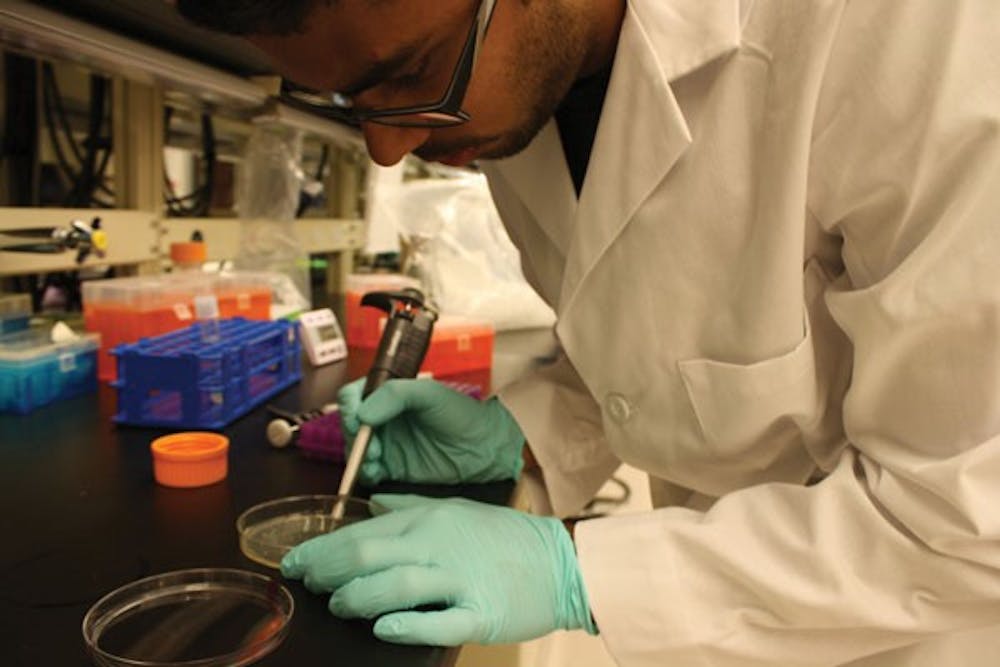 Biomedical Engineer junior Abhinav Markus works with a pipette tool to isolate a single colony from the bacteria plate. (Photo by Jessie Wardarski)
Biomedical Engineer junior Abhinav Markus works with a pipette tool to isolate a single colony from the bacteria plate. (Photo by Jessie Wardarski)ASU students are working to create a biosensor for use in developing countries that can detect disease-causing bacteria in water.
A member of the team who conducted volunteer work and research in Guatemala thought of the biosensor idea after witnessing the effects of after-storm mudslides that contaminated the water, said team member Ryan Muller, a medicinal biochemistry and molecular biology sophomore.
“Last year, direct pathogens were responsible for approximately 1.5 million childhood deaths worldwide,” Muller said. “This is a very prominent issue in developing countries.”
The group is focusing on affordability and creating an “organic biosensor,” he said.
Muller said the biosensor is made of proteins that are then suspended in a solution to extract a specific protein.
“It uses bacteria to produce a protein that can sense contamination,” Muller said.
The product is designed to detect contamination through two different processes.
One procedure determines the specific type of bacteria in the water by matching it to a DNA sequence, while the other procedure tests whether the water is contaminated in general by binding to the cell membrane of the bacteria.
In both cases, the water will turn blue if it contains disease-causing bacteria, team member Nisarg Patel said.
“The two designs together are more effective in detecting pathogens (disease causing bacteria),” said Patel, a molecular biosciences and biotechnology junior.
The nine-student team started building its design in June 2012 and received a majority of its funding from the School of Life Sciences and the School of Biological and Health Systems Engineering.
Team members were unsure how much funding they have received.
While Patel said funds were approximately $25,000 including all lab expenses and travel costs for the competition, faculty adviser Karmella Haynes said their total costs for the project were $15,000.
The biosensor is low-cost because it does not require expensive machinery, Haynes said.
“(The biosensor) is produced in friendly bacteria that only costs a few dollars per liter to grow,” Haynes said. “Other sophisticated machines … would be at least $5,000.”
The team plans for its biosensor to take the place of expensive biosensors that must be imported for use in developing countries, Patel said.
He said he wants to further develop the biosensor by obtaining a faster response for contamination detection.
“Right now it takes 30 minutes to an hour to produce the blue color,” he said. “We want it done in minutes.”
The biosensor, which is in its building stage, will be tested in the next few weeks and presented in October at the 2012 International Genetically Engineered Machine competition.
The iGEM Regional Jamboree competition for the Americas West Division will be held at Stanford University where the group will present their project to judges.
If the team advances, they will attend the World Championship Jamboree on Nov. 2 at Massachusetts Institute of Technology.
Reach the reporter at cldas@asu.edu




